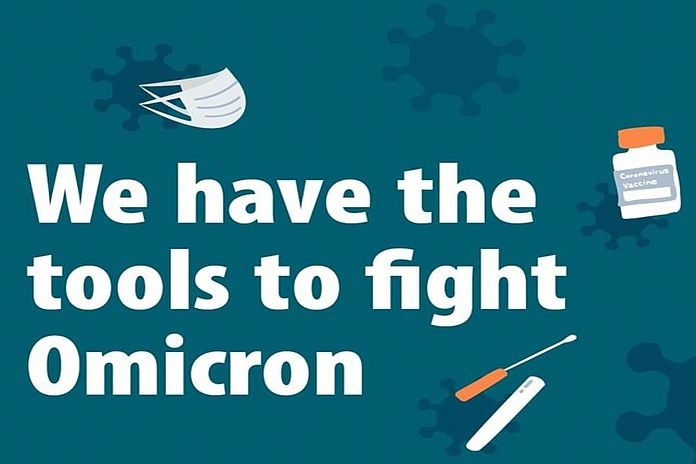ATLANTA, USA, (CDC) – Vaccines remain the best public health measure to protect people from COVID-19, slow transmission, and reduce the likelihood of new variants emerging.
Scientists are currently investigating Omicron, including how protected fully vaccinated people will be against infection, hospitalization, and death.
Masks offer protection against all variants. CDC continues to recommend wearing a mask in public indoor settings in areas of substantial or high community transmission, regardless of vaccination status.
Emergence of Omicron
On November 24, 2021, a new variant of SARS-CoV-2, B.1.1.529, was reported to the World Health Organization (WHO). This new variant was first detected in specimens collected on November 11, 2021, in Botswana and on November 14, 2021, in South Africa.
On November 26, 2021, WHO named the B.1.1.529 Omicron and classified it as a Variant of Concern (VOC). On November 30, 2021, the United States designated Omicron as a Variant of Concern, and on December 1, 2021, the first confirmed US case of Omicron was identified.
CDC has been collaborating with global public health and industry partners to learn about Omicron, as we continue to monitor its course. CDC has been using genomic surveillance throughout the course of the pandemic to track variants of SARS-CoV-2, the virus that causes COVID-19, and inform public health practice. We don’t yet know how easily it spreads, the severity of illness it causes, or how well available vaccines and medications work against it.
Despite the increased attention of Omicron, Delta continues to be the main variant circulating in the United States.
Where has Omicron been detected in the United States
CDC is working with state and local public health officials to monitor the spread of Omicron. This map shows the states that have detected at least one case of COVID-19 illness caused by the Omicron variant. More Omicron variant surveillance data on CDC’s COVID Data Tracker.





